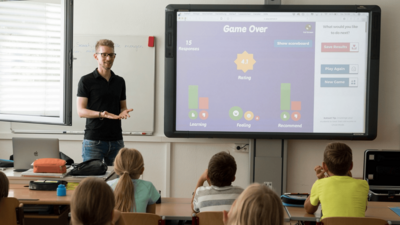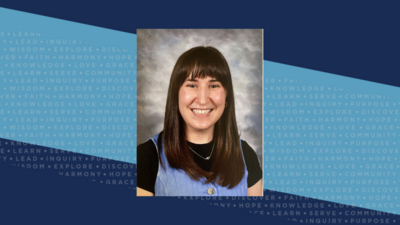Curriculum & Instruction: Best Practices for the Use of Technology in the Classroom

Technology has transformed the modern learning environment, providing innovative tools that enhance student learning and curriculum development. When used effectively, educational technology can enrich instruction, improve engagement and foster academic success. At Concordia University, Nebraska, the Master of Education in Curriculum and Instruction program equips educators with research-based strategies to integrate technology into their classrooms effectively. This article explores best practices for leveraging technology to support student success while maintaining a balanced and engaging learning experience.
The Role of Technology in the Modern Classroom
Educational technology has the power to personalize instruction, increase accessibility and expand the reach of high-quality educational resources. Whether through interactive software, digital collaboration tools or artificial intelligence-driven learning systems, technology plays a crucial role in shaping curriculum development. However, its effectiveness depends on intentional implementation guided by educational research and best practices.
Best Practices for Integrating Technology in Instruction
1. Align Technology with Learning Objectives
Before introducing any new technology, educators must ensure it aligns with learning goals and curriculum standards. Digital tools should enhance, not replace, traditional instructional strategies. Teachers should ask themselves:
Does this technology support the desired learning outcome?
How will students interact with it to deepen their understanding?
Does it accommodate diverse learning styles?
By strategically selecting digital tools, educators can create meaningful and engaging experiences that promote student learning.
2. Foster Active Learning and Engagement
Technology should not be used passively—it should encourage student participation and interaction. Digital tools that support active learning include:
Interactive simulations – Platforms like PhET Interactive Simulations provide hands-on learning experiences for STEM subjects.
Gamification – Educational games can motivate students and reinforce key concepts.
Collaborative platforms – Google Classroom, Padlet and other collaborative apps enable students to work together in real-time, building teamwork and communication skills.
When thoughtfully incorporated, these tools can make learning more dynamic and engaging.
3. Support Differentiated Instruction
Every classroom consists of students with varying abilities, learning styles and needs. Technology enables teachers to differentiate instruction by offering personalized learning pathways. Tools like adaptive learning software, closed captioning and speech-to-text applications help ensure that all students can access content at their level and pace.
Additionally, online platforms such as Khan Academy or IXL provide customized learning experiences that adapt based on student performance, helping educators meet diverse learning needs.
4. Use Data to Drive Instruction
One of the most valuable aspects of educational technology is its ability to collect and analyze student performance data. Teachers can leverage real-time insights to identify learning gaps, tailor lesson plans and provide targeted interventions.
Platforms like Nearpod and formative assessment tools such as Kahoot! or Quizizz allow educators to track student progress and make data-driven decisions to enhance learning outcomes.
5. Promote Digital Citizenship and Online Safety
As technology becomes increasingly embedded in education, it is essential to teach students how to navigate digital spaces responsibly. Digital citizenship includes understanding online etiquette, recognizing credible sources and protecting personal information.
Educators should integrate lessons on cybersecurity, ethical internet use and critical thinking into their curriculum to prepare students for safe and responsible digital interactions.
6. Provide Professional Development for Educators
The successful integration of technology requires continuous learning for teachers. Concordia University, Nebraska’s M.Ed. in Curriculum and Instruction program offers coursework focused on educational technology, ensuring educators stay updated on emerging trends and best practices. Professional development opportunities such as workshops, webinars and peer collaboration also help teachers refine their skills and implement technology effectively.
7. Balance Screen Time with Hands-On Learning
While technology is a valuable educational tool, excessive screen time can be detrimental to student well-being. Educators should strive to balance digital instruction with hands-on learning experiences such as group discussions, project-based learning and outdoor activities.
A well-rounded approach ensures students develop critical thinking, creativity and problem-solving skills beyond the digital space.
Technology and Concordia University, Nebraska’s M.Ed. in Curriculum and Instruction
Concordia University, Nebraska’s Master of Education in Curriculum and Instruction program prepares educators to effectively integrate technology into their teaching. With a strong foundation in educational research and curriculum development, the program equips teachers with the knowledge and skills needed to create engaging, technology-enhanced learning environments.
Key benefits of the program include:
Examining students’ teaching philosophies and approaches to curriculum planning through a lens of faith-based education practices.
Choosing an emphasis area or teaching endorsement that fits the students’ unique interests or needs in the classroom, including Trauma & Resilience, English as a Second Language, Instructional Technology Leadership or STEAM.
Completing a 45-hour practicum experience where students can propose, research and conduct a project that can be completed in their own classroom.
For teachers in Lutheran schools, Concordia Nebraska offers three graduate-level credit hours for completing the TEC 21 Workshop Program which can be used toward the M.Ed. in Curriculum and Instruction, M.Ed. in Educational Administration with Principal Endorsement and certificates in trauma and resilience, educational technology and educational technology science, technology, engineering and math.
By enrolling in this program, educators can enhance their ability to create meaningful, technology-driven learning experiences that improve student outcomes.
Conclusion
Educational technology, when used effectively, has the power to transform teaching and learning. By aligning digital tools with learning objectives, promoting active engagement, differentiating instruction, utilizing data, fostering digital citizenship and balancing screen time, educators can create dynamic and effective learning environments.
Concordia University, Nebraska’s M.Ed. in Curriculum and Instruction program provides the knowledge and training necessary for educators to implement these best practices with confidence. By staying informed and intentional in their use of technology, teachers can empower their students to succeed in an increasingly digital world.
Interested in Concordia's M.Ed. in Curriculum and Instruction?


